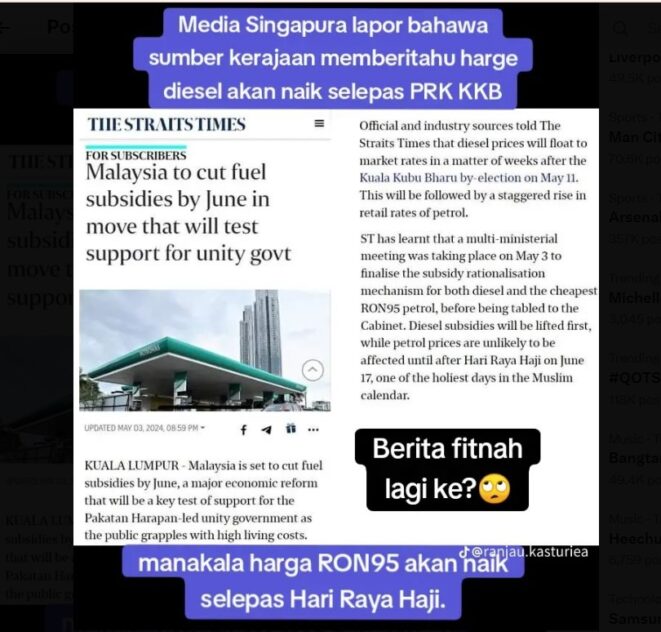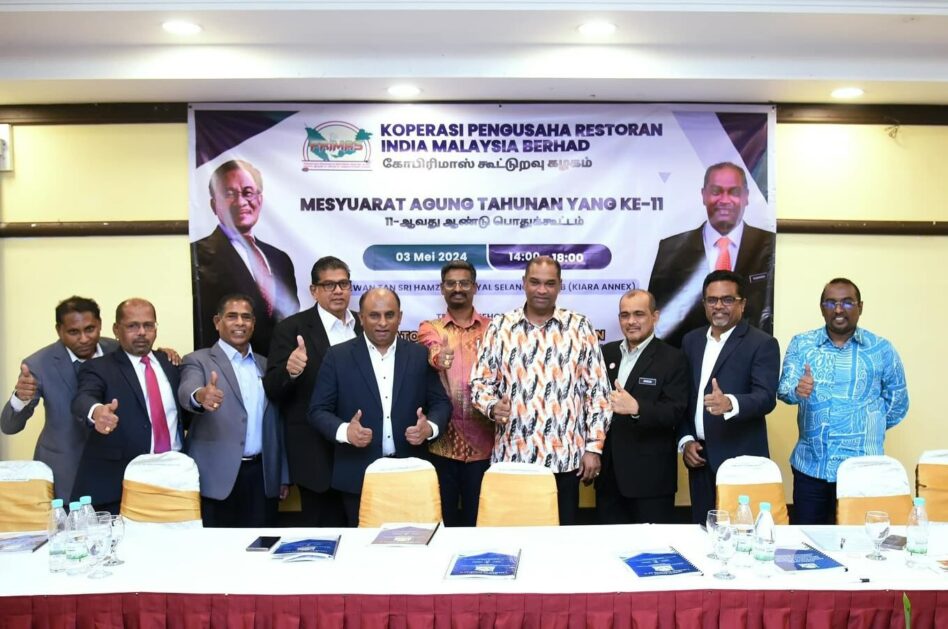IT is another year of expansionary budget to underpin the post COVID-19 pandemic recovery.
The Budget 2022’s expansionary stance is two-fold: Firstly, securing the recovery with targeted and time-limited measures; and second, rebuilding a more resilient economy and sustainable business through smart digital technologies, and forward-looking investments.
This means investing in green transition, circular economy, embrace the environmental, social and governance (ESG) business practices and 5G infrastructure for a better, sustainable, greener and more innovative future.
The Budget 2022’s total allocation of RM332.1 bil or 20.3% of gross domestic product (GDP) marks a new record high level, an increase of 3.6% from the revised Budget 2021’s RM320.6 bil.
Development expenditure is budgeted to increase strongly by 21.9% to RM75.6 bil in 2022 (RM62.0 bil in 2021), mainly for the transport, education and training, housing, energy and public utilities and environment as well as security sector.
Inefficiency
It is questionable whether the ministries and agencies have the capacity to effectively implement and disburse the record high level of expenditure.
Past records have consistently shown a shortfall in expenditure of about 8-10% in 2020-2021; 11-16% in 2013-2016 due to weak execution. Expansionary spending will not necessarily lead to a positive impact on economic output and income growth if the multiplier effect is restrained by inefficiencies, implementation delays and cost overrun.
The Budget 2022 deficit target is set at RM97.5 bil or 6% GDP, down from an estimated RM98.8 bil (6.5% of GDP) in 2021. After taking into account net revenue gain of RM6.2 bil arising from the proposed Budget 2002 measures, overall deficit will be lower at 5.6% of GDP in 2022. Malaysia has incurred uninterrupted 25 years of fiscal deficit since 1998.

We expect the task of budget deficit repairs to begin after the economy is being revived on stronger footing.
As guided by the 2022-2024 Medium-Term Fiscal Framework, the fiscal consolidation trajectory will be gradual with the overall fiscal deficit averaging 5% of GDP in 2022-2024 which implies 1.5-2 percentage points reduction to meet the 12th Malaysia Plan’s (12MP) fiscal deficit target of between -3% and -3.5% of GDP in 2025.
How worried should we be about the deficit and debt and liabilities exposure (end-June 2021: Government debt stood at RM958 bil or 63.3% of GDP; debt and liabilities at RM1.3 tril or 88.1% of GDP 2021)?
The International Monetary Fund’s Debt Sustainability Analysis framework simulation demonstrates increased the Government’s debt vulnerabilities in the event of any shocks, thus limiting the fiscal space and the ability to raise additional borrowing for counter-cyclical responses.
Higher debt service charges have restrained Budget 2022’s capacity to allocate for other expenditures. Debt service charges had increased by 9% per annum in 2018-2022 to reach RM43.1 bil in 2022, making up 18.4% of total revenue. This means that for every RM1 revenue collected, 18.4 cents go to service payment of domestic and external loans.
Economic recovery pace
To deliver on fiscal consolidation, it requires either a drastic cut in spending and expenditure rationalisation or a substantial improvement in revenue buoyancy and also to broaden the narrow tax base.
As part of a wider agenda of budgetary reform, the enactment of Fiscal Responsibility Act is vital to hold the Government accountable for its stewardship of the public purse in a prudent and responsible manner to ease the fiscal pressure for future buffer against external shocks.
Budget 2022 has proposed a review of tax treatment to increase tax revenue and tax compliance, namely the Special Voluntary Disclosure Programme (SVDP) for indirect taxes and the exemption of taxing foreign-sourced income.
The Government needs to quickly embark on fiscal reform and expenditure review to rebuild strong balance sheet for future shocks.
- For the sustainability of revenue sources: Broaden a narrow tax base through a broad-based consumption tax; plug the shadow economy (estimated 18.2% of GDP in 2019) and cross-borders tax evasion. Malaysia’s tax revenue to GDP has declined to 10.9% in 2020 from an average of 12% of GDP in 2018-2019. Only 21% of registered companies and 15% of employees are subject to income tax.
- Expenditure efficiency and rationalisation: Review the bloated emoluments (37% of total operating expenditure) and right-size the civil service based on a performance-reward system. Review retirement charges from defined benefit to defined contribution.
- For prudent debt and fiscal risk management: Enhance the management of contingent liabilities guaranteed by Government and commitment made under Public-Private Partnership (PPP).
Both the Treasury and the Socio Economic Research Centre (SERC) see the economy continuing to recover in 2022 but the Treasury’s estimates are higher than ours (Ministry of Finance: 2022F: 5.5%-6.5%, 2021F: 3%-4% vs SERC’s estimates: 4% in 2021 and 5.2% in 2022). The Treasury’s estimate is banking hard on a strong rebound in private consumption and public investment amid slower exports.

Downside risks
There remain external and domestic factors that would continue exerting downside risks to the domestic economy. We caution that global growth is projected to moderate in 2022; uncertainty in global monetary path and inflation concerns could cause financial volatility.
Domestic concerns are resurgence of virus cases; slower revival in domestic demand due to weak job and income growth; a delay in the implementation of Budget 2022’s projects and programmes; rising cost of raw materials, logistic costs as well as the shortage of workers which would dampen the recovery and earning prospects of some economic sectors.
Malaysia’s potential output growth had slowed in recent years – from 4.9% per annum in 2011-2019 to 3.3% in 2020 and 3%-4% in 2021. Hence, a substantial improvement in productivity, technology advancement and increase capital efficiency is needed to boost the country’s economic growth potential.
The Treasury expects stronger consumer spending (2022F: 7.3% vs 2021E: 4.1%) on some pent-up demand; improvement in the job market (estimated unemployment rate at 4% in 2022 vs 4.6-4.8% in 2021) and wage growth.
Continued cash handouts for the targeted households and individuals will provide a temporary relief. We are less optimistic with the labour market condition as a longer recovery in some services sectors such as tourism, retail and aviation mean slowing hiring.
Households and individuals have to repair their balance sheet via rebuilding savings or accumulating more precautionary savings, leaving some for discretionary consumption and spending. Increased prices of goods and services would reduce consumers’ real purchasing power.
The pandemic has caused a signification deterioration in households’ income. The percentage of Malaysians live below poverty line income (RM2,208 per month) had increased to 8.4% (640,000 poor households) in 2020 from 5.6% (405,000 households in 2019); while 580,000 M40 households (20% of the middle-income group) have been pushed down to B40 category.
The Treasury estimates headline inflation to moderate slightly to 2.1% in 2022 (SERC:2.3-2.5%) from estimated 2.4% in 2021 (SERC: 2.5%). Cost-induced pressure keeps building up due to rising global energy prices, costs of raw materials, logistic cost as well as the labour crunch, pushing up wage rate for some sectors.
Cost increases leave manufacturers and businesses with no choice but to pass onto consumers. The cost-induced inflation pressure could set off higher inflation expectations and a second-round effect.
The Treasury is cautious about a revival in private investment (2022: +2.6% vs +1.4% in 2021) while expect a robust rebound of 24.1% growth in public investment in 2022 (-1.9% in 2021).
The big boost to public investment comes from the continuation of large-scale transport project such as Mass Rapid Transit Line 2 (MRT2), Light Rapid Transit Line 3 (LRT3), Johor Baru-Singapore Rapid Transit System (RTS) and the Pan Borneo Highway as well as new projects such as MRT3 and upgrading of the Klang Valley Double Track Phase 2 (KVDT2) and the JENDELA digital infrastructure plan. – Nov 1, 2021
Lee Heng Guie is the executive director of the think-tank, Socio-Economic Research Centre (SERC).
The views expressed are solely of the author and do not necessarily reflect those of Focus Malaysia.










